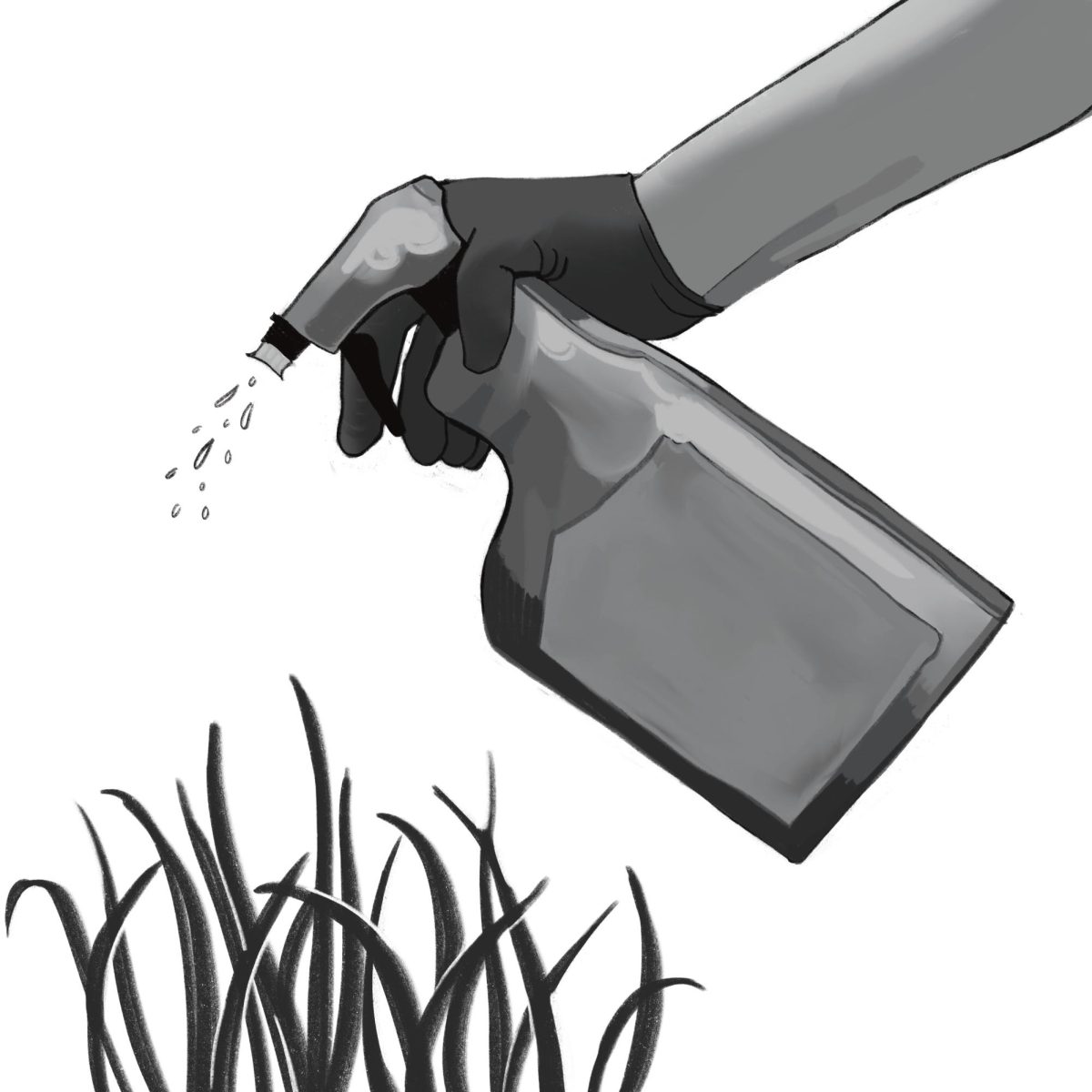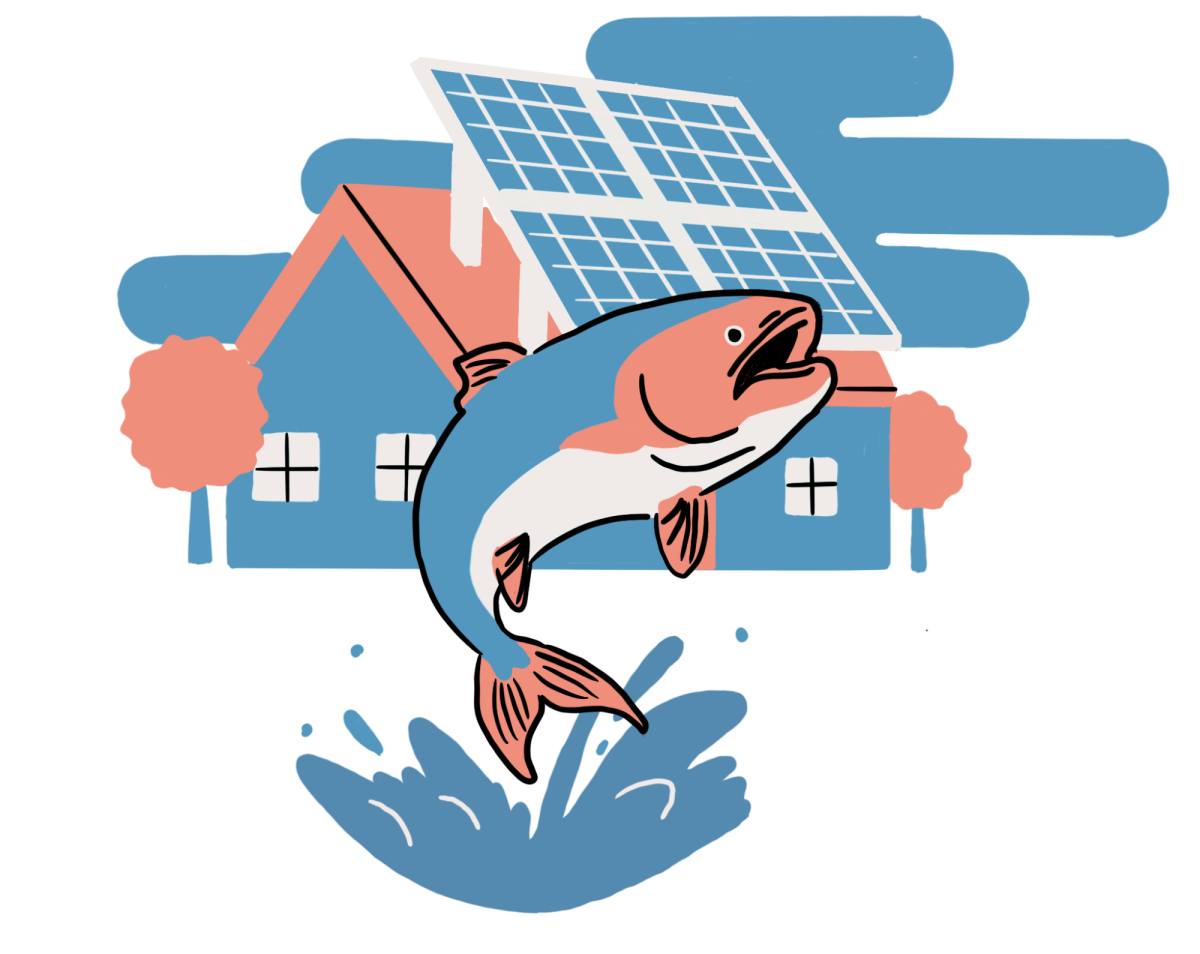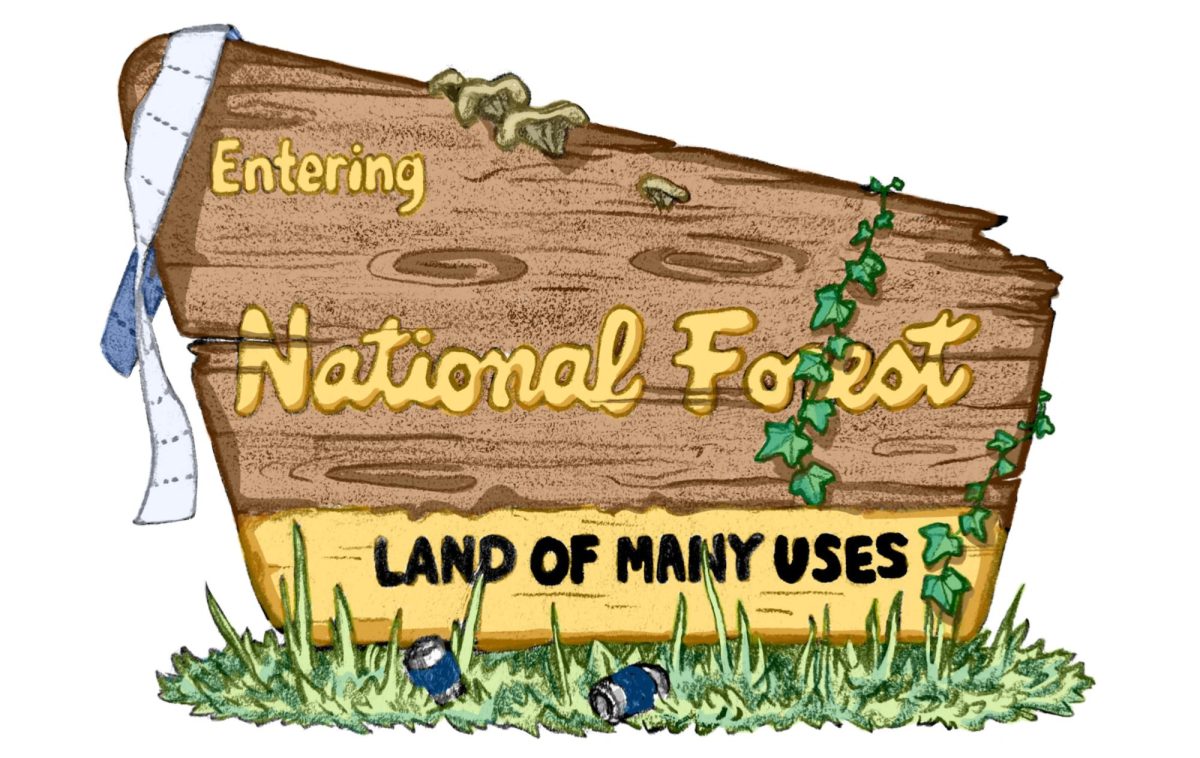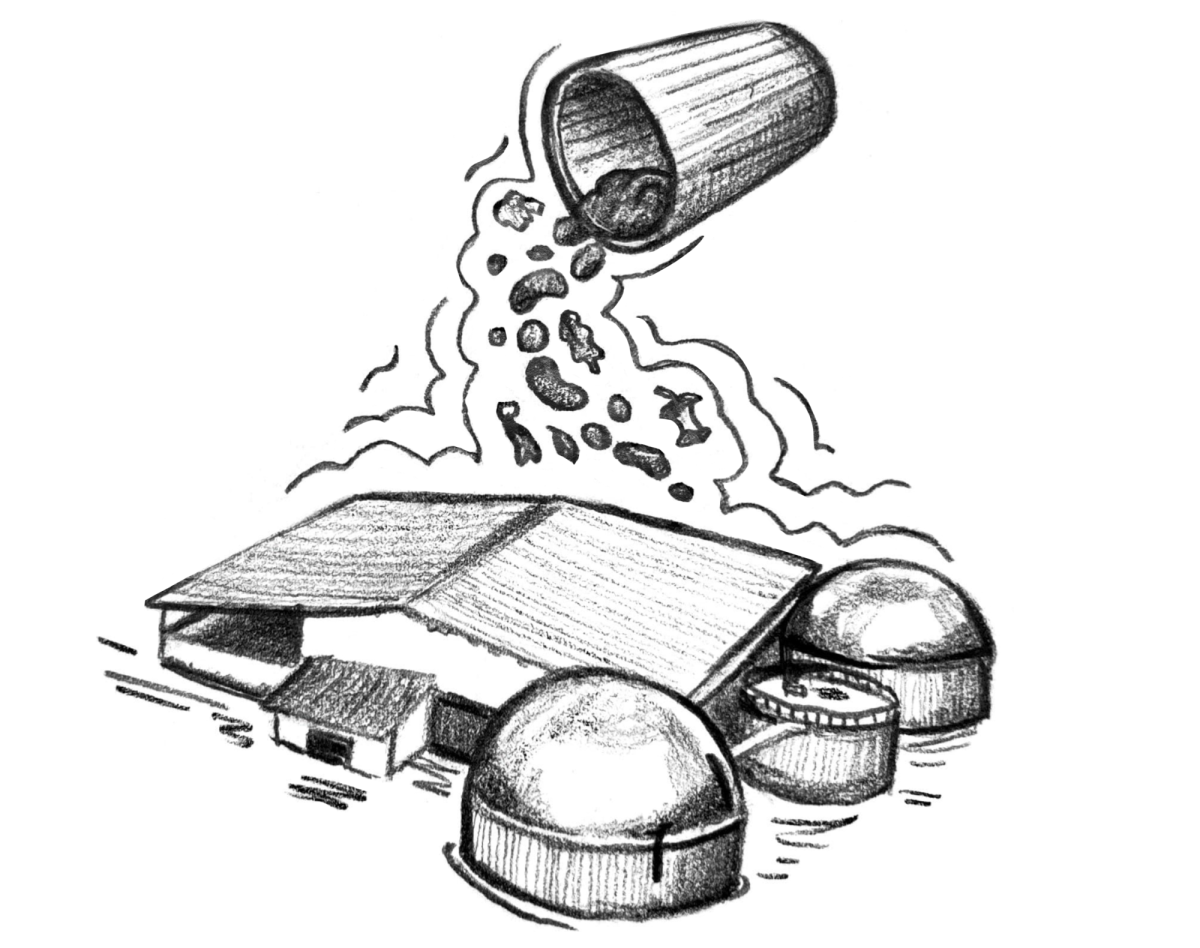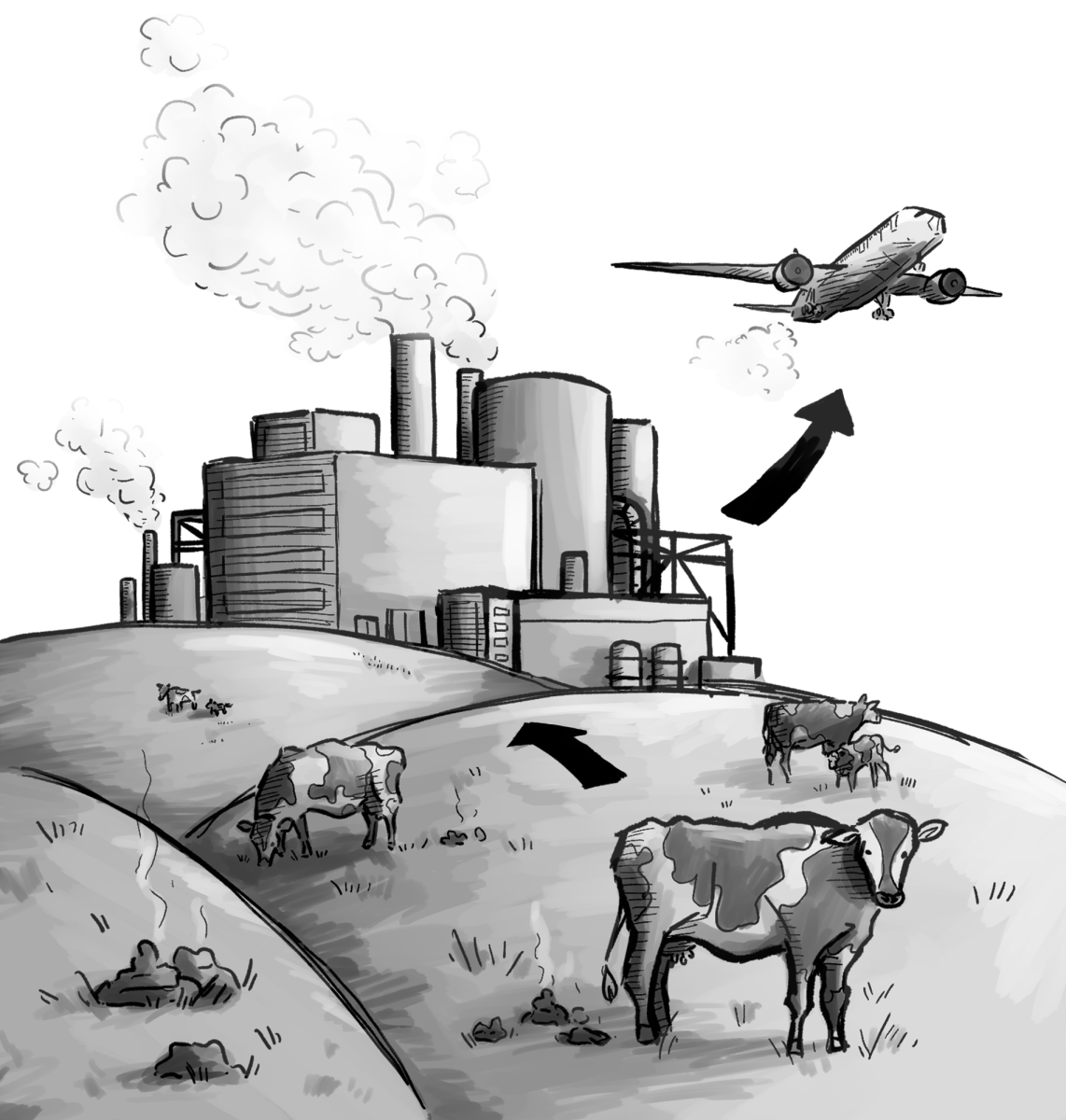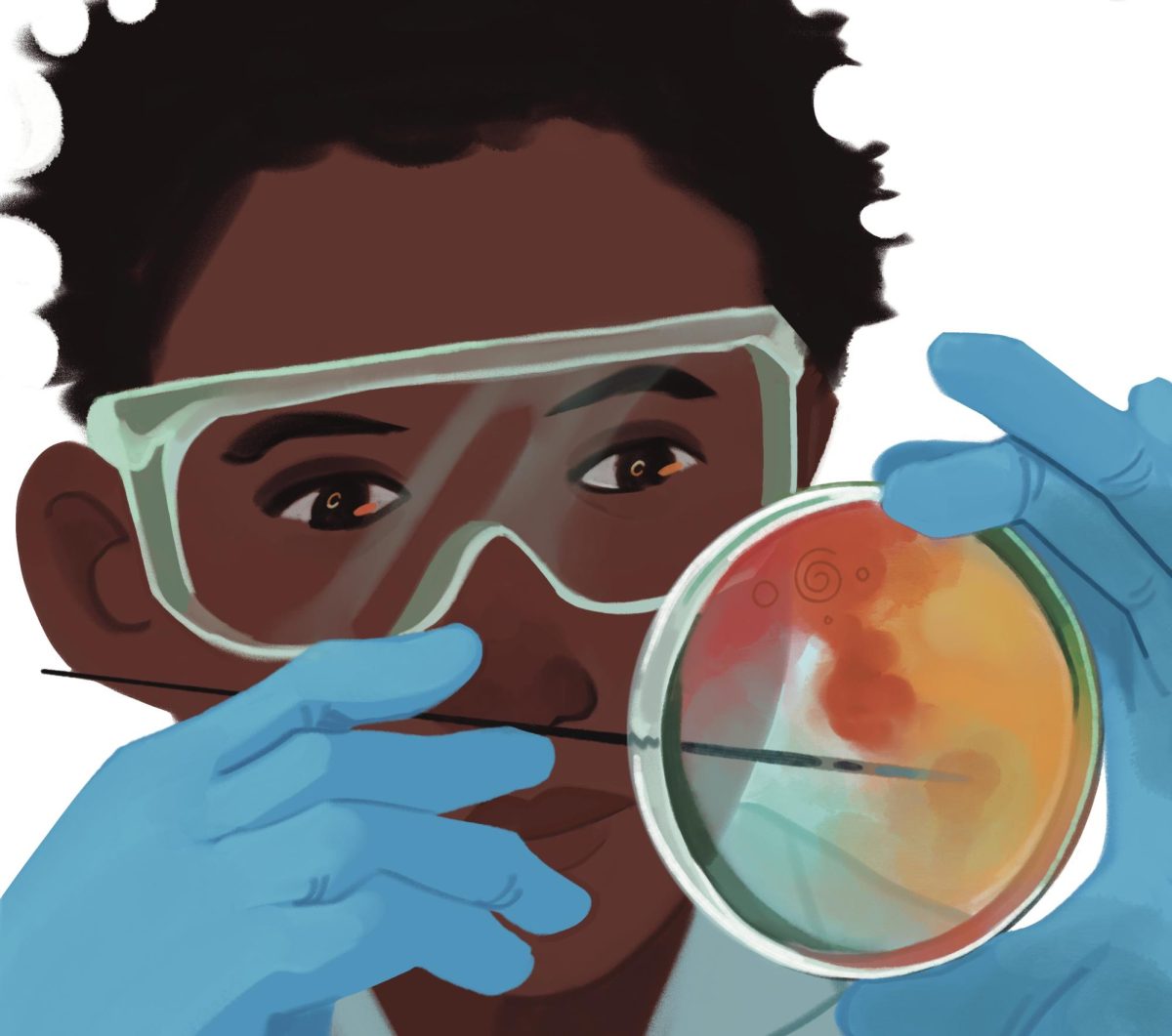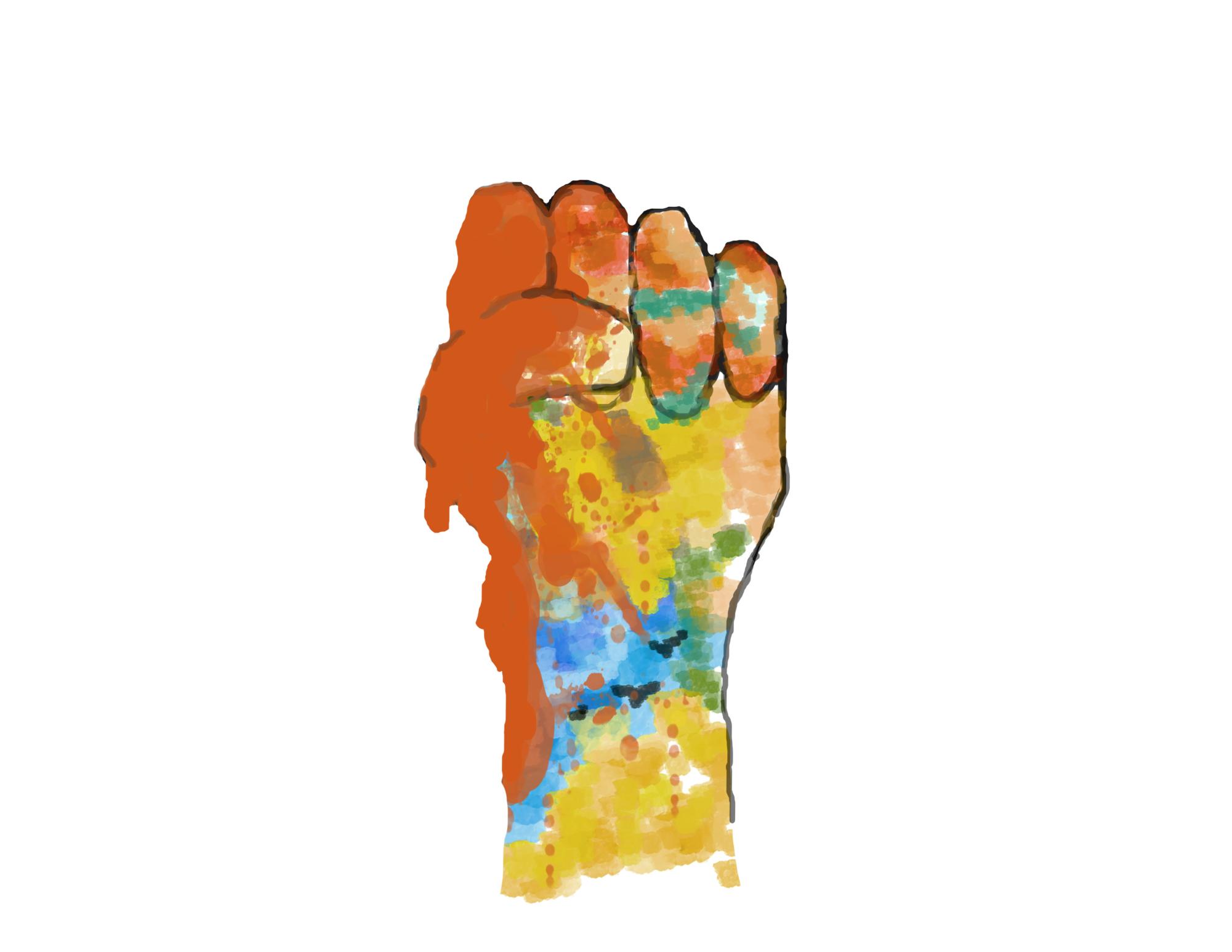
As we near the end of the semester, the dear seniors in true liberal arts fashion are left to wonder, “What am I going to do with my bachelor of arts?”
According to 2023 statistics, nearly a third of Whitman’s graduating class finished with a degree in the Arts or Humanities, with two of the most popular majors being English and studio art. Regardless of its continual popularity as an academic focus, many students of the arts are left confused with how to apply their studies in what they consider to be a meaningful way post-graduation. One track well-worn by many artistically inclined students is environmental advocacy and activism. The ties between activism and creative production, while perhaps initially hard to see, find clarity when looking at environmental art.
Professor of Art M Acuff, an accomplished sculpture artist focused on the intersections of environment and social reality, spoke on the functions of art in the world.
“Most of the arts can vary in their orientation; they’re between a really conceptual way of getting people involved versus a more material one. But they’re all, I think, aiming at the sensual, the enlivening of the senses. Aesthetics means appealing to the senses,” Acuff said. “That’s why when you think of anesthesia, it’s the dulling down of the senses. You don’t want to feel pain, but [aesthetics] is the opposite. It’s trying to awaken consciousness in you and it’s designed to do that through mostly visual but sometimes material forms and poetries.”
Activism, in its most basic form, is about awakening an individual or collective consciousness. The aesthetic functions of environmental art, while not always aimed at a direct protest or activist movement, engage viewers in a sensorial experience centered around the “natural.” The goals of art and activism in many ways are mirror images of each other. Engagement in the arts is instilled through the emotional transaction between the piece and the viewer, whether they are aware of it or not. Even if you see a piece of art and don’t use that as a source of stimulation to immediately act towards climate justice, the emotional and sensorial stamp has a much longer lasting effect on your memory.
Environmental Humanities Professor and published environmental author Lauren LaFauci spoke on the way art can inspire people to pursue a “greater good.”
“I would actually say that journalism and reporting has been more immediately effective on my actions in the world. However, art is what I remember. I remember Olafur Eliasson’s exhibit with reindeer lichen, I remember a Scottish artist’s sculptural work with composite plastic “rocks,” I remember countless poems, novels and stories that moved me or changed my thinking about human-environmental issues. I believe art does the ‘slow work’ (and sometimes fast work!) of internal change over time,” LaFauci said.
This “slow work,” while perhaps not enacting the sort of immediate response necessary to address an oil spill or wildfire, can elevate a culture of environmental advocacy through its sensorial engagement. In the age of instant dissemination of news, material or creative engagement with the subject of environmental decline has a hand in changing the landscape of climate action. But art is a very broad term, often applied to many different arrangements: sculpture, painting, photography, digital illustration, performance and writing. Within the art world, there is some debate over the “uses” of art forms, and what finds resonance with an audience.
Junior Environmental Studies-Art major Malcolm McGraw described which forms of art are useful in engaging an audience to change its point of view.
“I would probably get flak from the art department for saying this, but I think art is not super useful to the world unless it’s interactive. I really enjoy making art that people can touch and play with and move around,” McGraw said. “I think if you’re making interactive art you can definitely push people to interact with the environment and the world in a specific way, which can then lead to them thinking about the environment differently … I think in terms of environmental work, making someone actually go climb a tree or interact in a specific way has a big effect on how people see the environment.”
Climate protests and activist organizations have a long history of using various art forms to affect how people “see” the environment. In the 1960s, environmental art emerged as a movement led by artists such as Jean-Max Albert and Nils-Udo. In today’s mass climate protests, we see the power of duplication in prints, serving to raise awareness and enliven the senses. On Oct. 14, 2022, the organization Just Stop Oil engaged in what is arguably a performance art piece, where they threw soup on various famous paintings in an effort to halt the U.K. government from allowing further extraction of oil.
Environmental writing and poetry also serve as well-recognized forms of environmental expression, with writers like Mary Oliver and Thoreau still persisting as inspiration for many Whitman College students today. The continual significance of environmental writing both in existing works and as a form of expression are made visible in the relevance of writers such as Oliver and Thoreau, Dungy and Graham.
As we move farther and farther into the modern age, nature writers have to adjust their perspectives. One cannot generally just disappear into the woods for two years anymore. Writings like Tommy Pico’s “Nature Poem” and Robin Wall Kimmerer’s “Braiding Sweetgrass” blend the existential reckoning of the climate crisis, modern life and authentic and deeply emotional environmental reflection. Environmental writing has become even more integral to understanding the human experience in the age of the Anthropocene.
Mina Schwabacher Professor of English, Creative Writing and Humanities Katrina Roberts explained the functions of poetry in activism.
“Poetry reveals the miraculous in the mundane, helps us see what’s hiding in plain sight, shaking us from our default ways of passing through without engagement. In its distillation, poetry underscores urgency; in its appeal to all our senses, poetry can enact a sense of love for what might be overlooked or taken for granted, and in this way is vital for activism …What enters us through memorable language becomes the pocketed stone turned again and again in the mind … If art can seize us and shake us from despondency to care about anything, then yes, poetry is activism, whether this role is intentional or simply inevitable given poetry’s deep love for the world not only in its beauty but in its fragility and dark complexity,” Roberts said.
There doesn’t necessarily need to be a presence of intentionality in activist art. Even if there is some sort of intention, it is the questions and feelings sparked in the viewer that give the piece meaning.
Political action that engages the emotions and senses of the target audience, much in the way that art does, is most effective in producing results. Art in all its forms – dance, sculpture, ceramics, performance, music, poetry, prose, illustration, painting, photography and more – serve as viable and effective modes of activism. So, to the environmentally inclined graduating seniors of the Arts wondering how their degree will be of any “use” in the “real world,” many activists and artists have laid roadblocks for you to express yourself upon.

